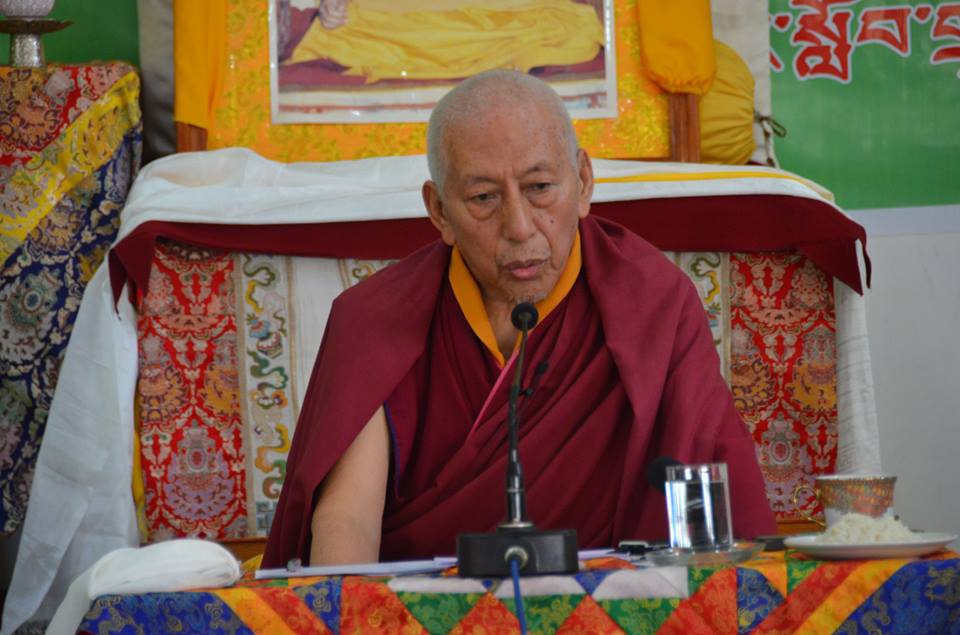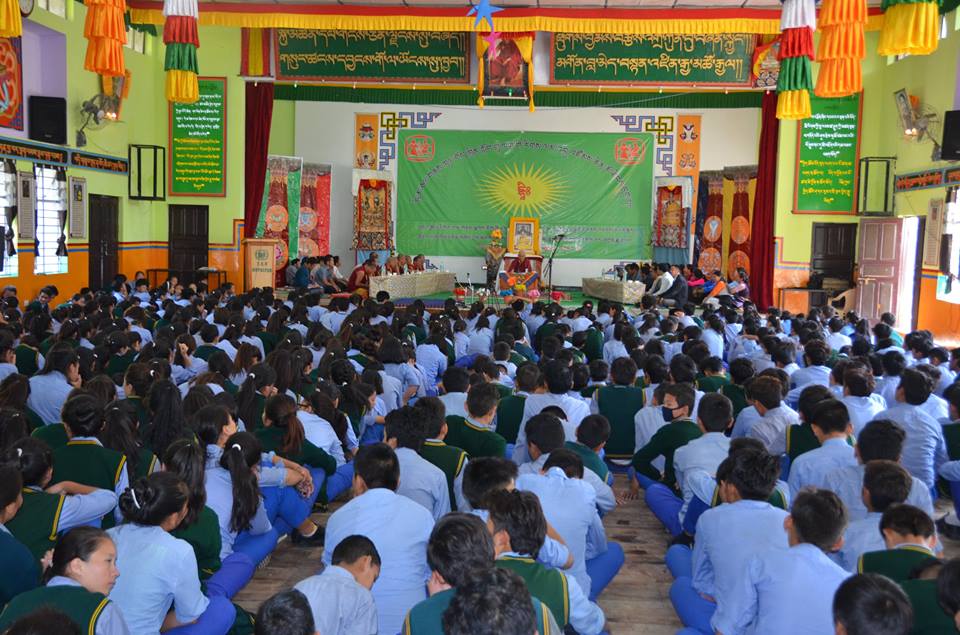A talk at the major dialectical meet of TCV Schools in Himachal Pradesh
8 October 2016
This morning His Eminence Prof. Samdhong Rinpoche graced as the Chief Guest the concluding session of the Major Dialectical Meet (6th), of the Tibetan Children’s Village Schools located in Himachal Pradesh state, and gave a guidance talk on the importance, objectives and benefits and so forth of studying logic (path of reasoning).
In attendance at the session were the Education In-charge (TCV), the directors, principals, the director and principal of TCV (Gopalpur), the philosophy teachers of the schools, a large number of participating students, and the teachers, staff members and students of TCV (Gopalpur).
The session began with all reciting together Praise to Manjushri, and Request-prayer for His Holiness the Dalai Lama to kindly continue to live long. There followed an introduction by the philosophy teacher (TCV Gopalpur), on the objectives and chronology of the meet. Thereafter the students presented dialectical debates, and a representative of the students narrated the experiences of participating in the meet.
Subsequent to those preliminary proceedings, His Eminence Prof. Samdhong Rinpoche gave the guidance talk, in which Rinpoche emphasised the importance of studying logic for enhancing intellect and wisdom, and presented the following insights.
It is because of the path of reasoning (logic) present in Buddhist teachings that Buddhism is able to stride together with science. Prior to Buddha’s time there were tenets of logic; as such, logic is common to both the classical non-Buddhists and Buddhists in India. Yet with the advent of Buddhism the knowledge of valid cognition (logical knowledge) flourished widely in India.
Of the four principal reasonings, feasibility reasoning is the principal one. It is through the feasibility reasoning that there would be the refutation—through the three modes of reasonings—of misunderstandings, and producing of valid inference.
In the context of Buddhist knowledge of valid cognition, Buddha had touched upon it many times in various discourses; it was Acharya Dignaga who pioneered the system of this field as a specific field of knowledge. One who elucidated correctly the works of Dignaga was Acharya Dharmakirti. The non-Buddhist tenets in India later compared their understanding of logic with that of the Buddhists’ and had made improvement in their logical system.
The path of reasoning is called also as “knowledge of reasoning,” “knowledge of dialectics,” “knowledge of reasons, (tarkavidya);” in meaning, that through which, by applying reasons or evidences, one realises the slightly-hidden and the-very-hidden phenomena which cannot be perceived directly by direct perception, is called the path of reasoning.
It is fortunate that by the kindness of His Holiness the Dalai Lama that there is this opportunity to study the path of reasoning by all, male and female, without discrimination. Knowledge of logic makes it easier to know other common and uncommon fields of knowledge. It greatly helps for mistakes to not occur. When studying path of reasoning one may quickly master what to say by mouth, but it is very difficult for one to form an understanding in one’s mind. As such, it is important to ensure that one understands,otherwise there will be the danger of becoming a “stubborn logician.”
After the talk His Eminence, as the Chief Guest, gave certificates and mementos of gratitude to the philosophy teachers, certificatesto the teachers who had recently completed a Teachers’ Training for Lower Primary Level, and appreciation scarf to those who helped organised the meet.
There followed a gratitude speech by the director of TCV (Gopalpur), who at the end, on behalf of the entire teachers, staff members and students of the school, presented to His Eminence Rinpoche a thangka-painting of Buddha Amitayus (Buddha of Longevity), in gratitude, with the request that His Eminence kindly continue to live long.

